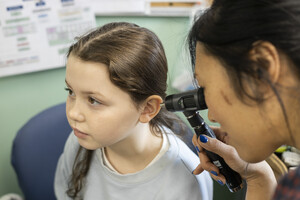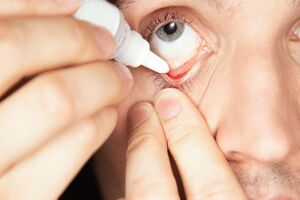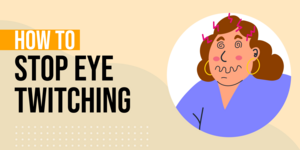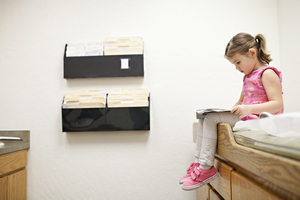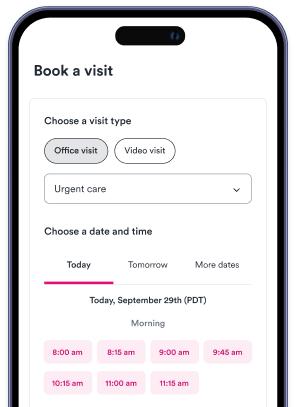Key points
- Children are more prone to heat exhaustion due to their less efficient internal cooling systems and inability to recognize early signs of overheating.
- Common signs of heat exhaustion in children include heavy sweating, fatigue, dizziness, muscle cramps, and changes in mood or behavior.
- Immediate action in case of heat exhaustion includes moving the child to a cooler environment, hydrating gradually, cooling the body externally, and monitoring for recovery or worsening symptoms.
- Preventive measures include staying hydrated, wearing appropriate clothing, planning outdoor activities wisely, and educating children on self-awareness of overheating signs.
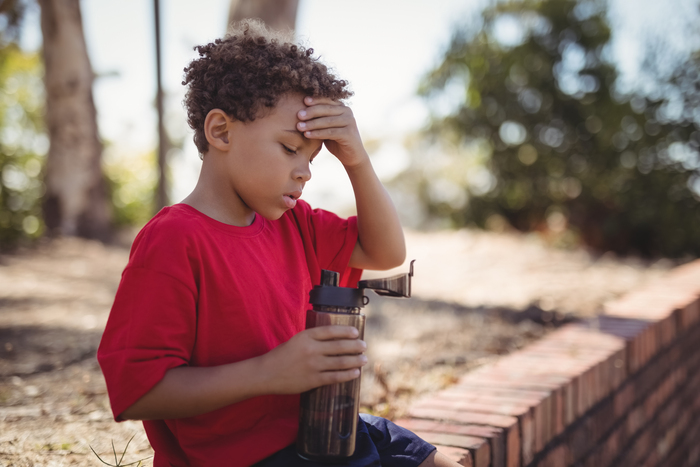
Summer is a time for kids to play hard — whether they're running through sprinklers, climbing on playgrounds, or chasing waves at the beach. But when the temperatures soar, so does the risk of heat exhaustion. Children are especially vulnerable because their bodies don’t cool down as efficiently as adults, and they may not recognize the early signs of overheating. Without quick intervention, what starts as fatigue or dizziness can escalate into a medical emergency. Knowing what to look for — and how to act fast — can help keep your child safe while they soak up the season.
Why kids are more prone to heat exhaustion
Children’s bodies respond to heat differently from adults, putting them at a higher risk for heat exhaustion during hot weather. Their internal cooling systems — such as sweating and heat dissipation — are not as developed, making it more difficult for them to maintain a safe body temperature during prolonged activity or exposure to heat. On top of that, kids are often more physically active during summer months, which adds to the amount of heat their bodies must manage. When heat builds up faster than their bodies can release it, the risk of overheating becomes serious and fast.
Heat emergency risk factors for kids
According to the Children’s Health, children naturally generate more body heat during physical activity than adults, which puts additional stress on their ability to stay cool. Additionally, their sweat glands are less efficient, meaning they release less sweat and, therefore, cool down more slowly. They also tend to ignore or not recognize the signs of overheating, such as dizziness or fatigue, until symptoms become severe. These physiological and behavioral factors combined make children more vulnerable to heat-related illnesses.
Common scenarios that increase a child’s risk of heat exhaustion
According to the EPA, there are several everyday summer activities can increase the risk of heat exhaustion in children:
- Outdoor sports practices, especially those held during midday hours, often involve extended periods in direct sunlight with limited hydration breaks.
- Playgrounds can become dangerously hot with their heat-retaining rubber surfaces and lack of shade.
- Summer camps and hiking trips may expose kids to long hours of outdoor exertion without access to adequate rest or cooling.
One of the most dangerous scenarios is being left in a hot car, where interior temperatures can rise quickly to fatal levels — even within minutes. Awareness of these risk factors is essential for prevention.
Early signs of heat exhaustion in kids
Heat exhaustion doesn’t always strike suddenly — often, there are early signs that something is wrong. Recognizing these symptoms can help you act quickly to prevent more serious heat-related illness:
- Children experiencing heat exhaustion may begin to sweat heavily, even if their skin remains cool and damp to the touch.
- They may complain of feeling tired or weak, and you might notice they’re drinking more water than usual due to increased thirst and a dry mouth.
- Dizziness, lightheadedness, or a sensation of being about to faint are common early signs.
- Muscle cramps, particularly in the legs, can signal that the body is struggling to manage the heat and may be dehydrated.
- Changes in mood or behavior can be some of the earliest and most telling signs in children.
- A normally energetic child may seem unusually irritable, fussy, or withdrawn.
- Some kids may become unusually quiet or display signs of confusion, such as trouble focusing or responding slowly to questions. Others might appear unusually sleepy or uninterested in playing — this is a significant red flag, especially during active outdoor time.
- Pale or clammy skin is a sign that the body is trying to cool down but is under stress.
- Breathing may become more rapid and shallow than usual, as the body works harder to regulate internal temperature.
- Some children may also mention having a mild headache, which can indicate dehydration and overheating.
When does heat exhaustion become an emergency?
As heat illness progresses, symptoms may intensify and signal the onset of heat stroke. Warning signs include:
- A high fever
- Vomiting or persistent nausea
- A rapid but weak pulse
- Unresponsive or lose consciousness entirely
- Seizures, severe confusion, or disorientation
These symptoms indicate the body’s internal temperature regulation is failing, and immediate medical intervention is necessary. The National Weather Service advises that you call 911 immediately if anyone, especially a child, has these symptoms.
What should you do if your child has symptoms of heat exhaustion
If you think your child is showing signs of heat exhaustion, acting quickly can prevent the condition from progressing into heat stroke. The goal is to lower their body temperature safely and steadily while keeping them comfortable and hydrated. The Red Cross recommends these steps:
1. Move the child to a cooler environment
The first and most important action is to stop further heat exposure.
- Bring them indoors to an air-conditioned space, if available. Even a fan-cooled room is better than remaining outside.
- If indoors isn’t an option, find shade immediately, such as under a tree, a tent, or an umbrella.
- Avoid hot surfaces like asphalt or rubber playgrounds, which radiate additional heat.
2. Hydrate gradually
Proper hydration is key, but it must be done slowly and carefully, according to the Red Cross.
- Offer small sips of cool (not ice-cold) water to avoid stomach upset.
- Encourage frequent sipping rather than gulping large amounts all at once.
- Avoid drinks with caffeine or high sugar content, such as soda or sports drinks, which can worsen dehydration or irritate the stomach.
3. Cool the body
Help your child’s body release excess heat through external cooling methods:
- Place a cool, damp cloth on their forehead, neck, and underarms.
- Loosen or remove excess clothing to allow heat to escape.
- Use a fan or manual fanning to aid the cooling process through evaporation.
- Avoid ice baths or extremely cold water, which can cause shivering and worsen the situation.
4. Watch for recovery or worsening symptoms
Even if your child begins to feel better, the Red Cross notes that you should continue to observe them closely.
- Check their body temperature and monitor heart rate every 10–15 minutes.
- Watch for continued sweating, return of energy, and mental alertness — all signs of recovery.
- If symptoms worsen or don’t improve after 30 minutes, or new signs like vomiting or confusion appear, seek urgent medical care immediately.
How urgent care can help with heat exhaustion
Urgent care centers are well-equipped to treat children with heat exhaustion, especially when home care isn’t enough. During a visit, providers will assess your child’s symptoms, check vital signs, and determine the severity of dehydration or overheating. Treatment may include oral or IV fluids, cooling blankets, and ongoing monitoring to ensure symptoms don’t escalate to heat stroke. Before discharge, you’ll receive follow-up instructions — including when it’s safe for your child to return to physical activity, how to maintain proper hydration, and tips to prevent future heat-related illnesses.
Tips to prevent heat exhaustion in children
Preventing heat exhaustion in kids requires a combination of preparation, smart choices, and teaching children how to care for themselves during hot weather. Here are simple, practical ways to reduce the risk:
1. Stay hydrated
- Encourage regular water breaks, especially during physical activity or outdoor play
- Provide electrolyte drinks, like diluted sports drinks, if they’re playing for extended periods
- Remind kids to drink even if they’re not thirsty
2. Dress appropriately
- Choose lightweight, loose-fitting clothing made from breathable fabrics like cotton
- Opt for light-colored clothing to reflect the sun’s heat
- Have your child wear a hat and use UV-protective clothing when in direct sunlight
3. Plan outdoor activities wisely
- Schedule outdoor play in the early morning or late afternoon, when temperatures are lower
- Encourage frequent breaks in shaded areas or indoors to rest and cool down
- Limit strenuous activities during peak heat hours, typically between 10 a.m. and 4 p.m.
4. Educate kids on self-awareness
- For older children, teach them how to recognize signs of overheating, such as dizziness, tiredness, or unusual thirst
- Encourage them to speak up if they start to feel unwell, even if it interrupts playtime
- Reassure them that taking breaks and asking for help is always okay
Find urgent care near you for heat exhaustion concerns
If your child shows signs of heat exhaustion or isn't improving with home care, urgent care can provide fast, reliable treatment. Use Solv to quickly find a nearby clinic with same-day availability — perfect for busy summer days when every minute counts. Whether you’re at a park, camp, or sports field, help is just a few clicks away with Solv.
FAQs
Why are children more prone to heat exhaustion than adults?
Children are at a higher risk for heat exhaustion because their bodies respond to heat differently from adults. Their internal cooling systems, such as sweating and heat dissipation, are not as developed, making it more difficult for them to maintain a safe body temperature during prolonged activity or exposure to heat. In addition, children are often more physically active during summer months, which adds to the amount of heat their bodies must manage.
What are the early signs of heat exhaustion in children?
Early signs of heat exhaustion in children include heavy sweating, feeling tired or weak, increased thirst and a dry mouth, dizziness or lightheadedness, muscle cramps, changes in mood or behavior, pale or clammy skin, rapid and shallow breathing, and mild headaches.
What should I do if my child shows signs of heat exhaustion?
If your child shows signs of heat exhaustion, you should act quickly to prevent the condition from progressing into heat stroke. The first step is to move the child to a cooler environment, such as indoors or under shade. Then, offer small sips of cool water and cool the body with a damp cloth on the forehead, neck, and underarms. Monitor the child closely and if symptoms worsen or don’t improve after 30 minutes, seek urgent medical care immediately.
When does heat exhaustion become a medical emergency?
Heat exhaustion becomes a medical emergency when symptoms intensify and signal the onset of heat stroke. Warning signs include a high fever, vomiting or persistent nausea, a rapid but weak pulse, unresponsiveness or loss of consciousness, and seizures, severe confusion, or disorientation. If a child has these symptoms, immediate medical intervention is necessary.
How can I prevent my child from getting heat exhaustion?
Preventing heat exhaustion in children requires a combination of preparation, smart choices, and teaching children how to care for themselves during hot weather. Encourage regular water breaks, especially during physical activity or outdoor play. Dress them in lightweight, loose-fitting clothing made from breathable fabrics like cotton. Plan outdoor activities during cooler times of the day and encourage frequent breaks in shaded areas. For older children, teach them how to recognize signs of overheating and encourage them to speak up if they start to feel unwell.




